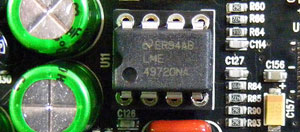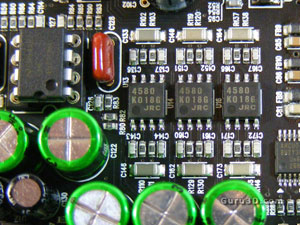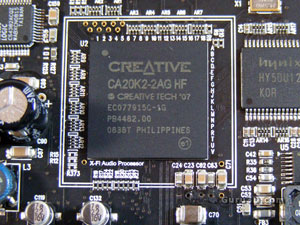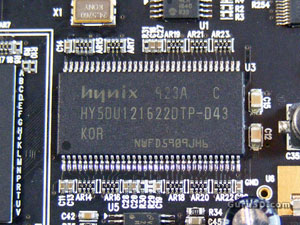Electronics Overview
Electronics Overview
Modern soundcard are coming equipped with more impressive audio hardware each generation. We at the Guru3D audio Lab are always interested in what components the designers have opted for on any new design. Lets dissect this design and see where all the audio goodness come from.
Opamps
A few years back your generic PC audio user would have no idea what an opamp actually were. This seemed to change when cards started coming equipped with sockets to change one or more of the cards opamps.
LME49720NA

This opamp is a variation on the well known LM4562NA and according to the specification sheet is identical in every way. That being said some do suggest there are sonic differences between the two models.
This opamp has a fast slew rate of +/- 20V/µs and an impressively low (THD+N) value of 0.00003% (typical). Since the LM4562NA was released it has made its way into many audio circuits first through DIY modifications and finally companies started using it in their designs following suit from the audio community. This is a great opamp for clarity and detail for the front channels.
LME49720NA Specification Sheet
JRC4580

This opamps is used for the remaining channels and as a signal buffer for the discrete headphone circuitry. Many audio designers would consider this opamp generic and acceptable for audio work. The specifications are somewhat lower then what we have on LM/LME series, with a slew rate of +/- 5V/µs and a THD+N% of 0.0005%. To note, these opamps are seen in many audio circuits performing various tasks.
20K2 -X-fi 2 Processor This chip is the second version of the famous X-fi DSP processor offer native PCI-E connectivity. The 20K2 series chip on the Home Theater HD 7.1 is a hardware Digital Signal processor (DSP) and offers the user some serious audio muscle for various audio tasks. The X-fi processor offers 51.1 Million (yes, million) transistors dedicated to audio.
This chip is the second version of the famous X-fi DSP processor offer native PCI-E connectivity. The 20K2 series chip on the Home Theater HD 7.1 is a hardware Digital Signal processor (DSP) and offers the user some serious audio muscle for various audio tasks. The X-fi processor offers 51.1 Million (yes, million) transistors dedicated to audio.
The DSP offers hardware accelerated audio effects and 10,000 MIPS (Million Instructions Per second!) Without bogging this review down with the many parameters and values related to the audio horsepower of the X-fi processor, let's just say it offers approximately 24X more processing power than the Audigy processor. The Main options this card offers that gamers look for is the hardware accelerated EAX 1,2,3,4,5 and OpenAL based in game environmental effects.
To note, if your current card does not have a dedicated DSP processor such as the Audigy (10KX) or X-FI (20KX) series Digital signal processor then any and all effects and other routines tax your CPU. The full range of time and frequency based effects, Sample rate conversion and values related to internal operation of this processor are outside the scope of this review. If you are interested in finding out more about the 20KX series DSP processors you can have look here: X-FI info link
X-RAM The Auzentech HTHD 7.1 contains 64MB of dedicated RAM, commonly referred to as X-RAM. This on-card RAM space offers a working area for audio task performed on the card by the 20K2 series DSP processor. X-Ram offers user two main benefits, Game designers can incorporate higher quality sound samples into their games as they can be loaded into the X-Ram dynamically before they are required.
The Auzentech HTHD 7.1 contains 64MB of dedicated RAM, commonly referred to as X-RAM. This on-card RAM space offers a working area for audio task performed on the card by the 20K2 series DSP processor. X-Ram offers user two main benefits, Game designers can incorporate higher quality sound samples into their games as they can be loaded into the X-Ram dynamically before they are required.
Compressed samples which are common on PC's and especially seen used in games can be decompressed into the X-RAM offering a dynamic buffer area for the designers. Both tasks translate to increased speed and efficiency if incorporated by designers. With more and more games having audio engines coded for OpenAL, X-RAM actually becomes more important. When using OpenAL API, X-RAM is defaulted to automatically load in audio buffers and requires no further coding by the designers.
